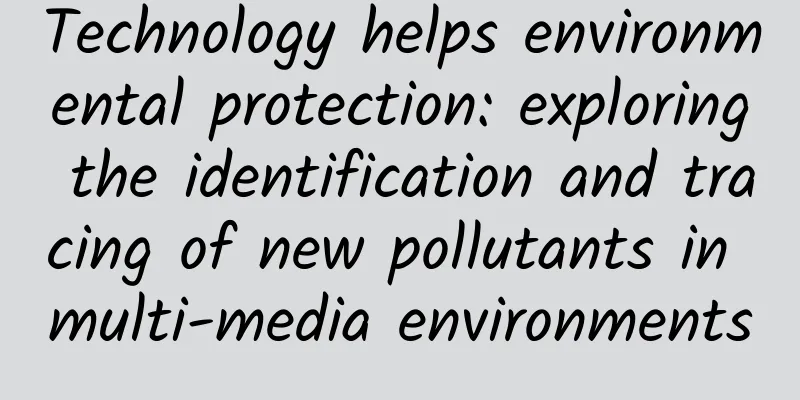Suspended! Why is Super Typhoon Makar so terrifying? What is eyewall replacement?

|
Audit expert: Ye Haiying Deputy Director of the New Media Center of the Meteorological Publicity and Science Center of the China Meteorological Administration (China Meteorological News Agency) According to the Central Meteorological Observatory, this year's No. 11 typhoon "Makar" experienced two eye wall replacements on the 5th and 6th, and made landfall on the coast of Wenchang, Hainan Province on the afternoon of September 6th. It was a super typhoon when it landed, making it the strongest autumn typhoon to land in my country. According to the latest news from the Central Meteorological Observatory, this year's No. 11 typhoon "Makar" was discontinued at 17:00 p.m. on the 8th, but the rainfall brought by its residual clouds is still continuing. What is the eyewall replacement mentioned in the previous article? How are typhoons formed? What should we do when a typhoon comes? How are typhoons formed? The scientific name of typhoon is tropical cyclone, which is an atmospheric vortex generated on the tropical or subtropical ocean surface. It rotates counterclockwise in the northern hemisphere and clockwise in the southern hemisphere. Uneven temperature distribution will cause the air pressure to fluctuate, and the air will flow from the relatively high pressure area to the relatively low pressure area. In this process, the direction of the air flow will be deflected by the Coriolis force. When the air flow in a large area is constantly deflected, it may rotate. Schematic diagram of airflow movement around low pressure systems in the Northern Hemisphere. LOW indicates low pressure, black arrows indicate the direction of pressure gradient force (high pressure points to low pressure), and red arrows indicate the direction of airflow movement after being affected by the Coriolis force. Source: okiofuge For a large atmospheric vortex like a typhoon to appear over the ocean, the following conditions must be met: 1. The sea surface temperature must be high enough, requiring it to be above 26-27 degrees Celsius. Warm shallow seawater contains a large amount of water vapor and energy, and is the main energy source for typhoons. 2. The existence of suitable disturbances in the movement of the middle and lower atmosphere can trigger the convergence and ascent of low-level airflows, which is the starting mechanism for typhoon formation. 3. The Coriolis force must be large enough to make the convergent airflow gradually form a counterclockwise horizontal vortex. Therefore, atmospheric disturbances usually need to be located more than 5 degrees away from the equator to develop into typhoons. 4. The horizontal wind speed difference between the upper and lower layers of the troposphere cannot be too large. When water vapor condenses in the middle and upper layers, it will release a large amount of heat to heat the middle and upper atmosphere. When the difference in wind speed between the upper and lower layers is small, such heat can stably and efficiently heat the atmosphere above the low-level disturbance. The "warm heart" structure formed by this can ensure the continuous reduction of low-level air pressure, and eventually form a typhoon. Schematic diagram of typhoon formation process Source: aristo What is eyewall replacement? Typhoons can generally be divided into three parts: the typhoon center (eye area), the typhoon cloud wall (eye wall), and the spiral rain belt. "Eye wall replacement" is also called "eye wall replacement". This is a common process of self-structural adjustment for strong or super typhoons and is a sign of a mature tropical cyclone. Image source: National Satellite Meteorological Center Generally speaking, when the eyewall is replaced, the vorticity in the core area of the eye will be much greater than the vorticity in the outer circle. In other words, the size of the vorticity is proportional to the size of the gap between the two eyewalls. During the eyewall replacement process, the outer eyewall will continue to thicken, while the inner eyewall will gradually weaken until it collapses. Finally, as the vorticity of the inner eyewall and the vorticity of the outer eyewall gradually balance, the collapsed inner eye will be absorbed by the outer eyewall, and the eyewall replacement is completed. What impact does it have on typhoons? Eyewall replacement generally occurs in very strong typhoons. This is the structural adjustment stage in the development process of extremely strong typhoons. Generally, the typhoon will become weaker during the replacement process, and the eye of the typhoon may not be clear. After the replacement is successful, the intensity of the typhoon will increase again. But we need to note that there is no necessary connection between eyewall replacement and the increase or decrease in typhoon intensity, and the change in typhoon intensity is affected by many factors. China Weather Network analyzed that the eye area of "Ma Ke" became blurred in the afternoon of September 5, and the eye wall was being replaced at this time. Source: National Satellite Meteorological Center In the afternoon of September 5, the eye area of typhoon Makar became blurred, the inner eye wall weakened, and the outer eye wall developed. This was a typical eye wall replacement. Subsequently, Makar strengthened and the eye area of the typhoon gradually became round. At 2 a.m. on September 6, the eye of Capricorn was clearly visible on the satellite cloud map. Source: National Satellite Meteorological Center On the morning of September 6, Capricornus rapidly developed an outer eyewall that surrounded the inner eyewall and began to shrink. The second round of eyewall replacement is underway. Similar to the first eyewall replacement, Capricornus's shape on satellite cloud images has become ugly. What should we do when a typhoon hits? 1. If you are outdoors, take shelter in a sturdy building as soon as possible. Bend down and lower your center of gravity when walking. 2. Do not take shelter near temporary structures, billboards, towers, large trees, etc. 3. If you are indoors, close the doors and windows, and use wide tape to form a "米" shape on the windows to reinforce the glass. 4. Shortly after a strong typhoon passes, be sure to continue to stay in a safe place to avoid the wind. |
>>: In life, what kind of paper is most likely to cut your hands? The result will surprise you
Recommend
Before and after the ICO suspension: Too many scammers drive up prices and become the norm
The introduction of a policy has made ICO (token)...
Android will start charging from February next year
Google is finally ready to take action. Starting ...
Double Eleven e-commerce advertising case!
On the one hand, competition for traffic is inten...
A lifelong passion for breeding! The wheat fields are rolling, but he is always absent
◎ Written by: Science and Technology Daily report...
What treasures have humans unearthed in the past 200 years? Just look at this picture
For more than 200 years, There are countless impo...
Cherries become the favorite during the Spring Festival. They are all big cherries, so why are they more expensive?
The Spring Festival is approaching, and fruit is ...
You are not fat, why do you always say you want to lose weight?
Being keen on using diet to shape the body and be...
A new round of manned lunar landing is approaching. How many highlights are there?
Recently, Lin Xiqiang, deputy director of the Chi...
Take stock of how APP promotion can take advantage of the “frog” craze in various ways!
Following the popularity of the chicken-eating ga...
Dream come true in Paris! Fan Zhendong's super grand slam! Why did he roar after winning?
Review expert: Chen Mingxin, national second-leve...
Another controversy! Should we "walk on the left and stand on the right" when taking an escalator? Here comes the scientific explanation
Recently, a netizen from Xi'an said that when...
Xiaomi banned in India: Why didn’t this happen in China?
Recently, Xiaomi, which has just been thriving in...
A good place to drink tea in the three towns of Wuhan
Wuhan Tea Tasting Contact Information I strongly ...
Can fish oil lower blood lipids? Can sweating more after a fever help you get better faster? The truth is...
Do you take medicine when you have symptoms of po...









